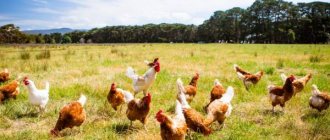In this material:
- Description and relevance of the business idea
- Description of products and their varieties
- Technology for the production of boiled-smoked sausage
- Market and industry analysis is the first step towards the goal
- Company organizational plan Registration
- Product certification
- Premises and requirements for them
- Purchase of equipment for making sausages
- Purchase of raw materials and additives
- Formation of staff
- Investments in the project
Sausage is one of the products known to everyone and requires no introduction. Its numerous varieties are almost always present both on the festive table and in the everyday diet. Nowadays, the introduction of sanctions stimulates the active development of import substitution, however, among many entrepreneurs there is an opinion that the high-quality production of this meat product and making a profit from its sale is only possible thanks to solid production capacities. In reality, this is not the case; even a small production can provide a decent income and compete with large enterprises if you approach the opening of such a project correctly. A business plan for a sausage shop, containing all the necessary information, will help you cope with all organizational issues.
What equipment to choose for a sausage shop
The first thing you need is equipment. To organize a sausage shop you may need the following kit:
- Sausage cutter is a machine for fine and structural grinding of meat (for example, KILIA 2000S cutter).
- Vacuum filler – designed for filling the casing with minced sausage (for example, TECMAQ vacuum filler).
- Ice maker – used for cooling, transportation and storage.
- Meat grinder – used for preparing sausage mince.
- Thermal chamber – used for smoking meat products.
- Electric frying pan with thermostat.
- Minced meat mixer - used for mixing minced meat and massaging small meats.
The cost of such a kit starts from 3.0 million rubles. The price ceiling depends only on the performance of the equipment.
Stages of building a business
To organize a sausage production workshop, decide on the scale of the business, which depends on the amount of investment and the range of products. The main stages of starting your own business are:
- development of a concept and promotion strategy;
- registration of permits;
- search for premises;
- personnel selection;
- equipment purchase;
- purchase of raw materials;
- building logistics processes, marketing;
- quality control.
Selecting a room
The following costs are associated with the selection of premises. It’s good if you find a room with all suitable conditions: water supply, sewerage, sufficient power. And also, it meets all the requirements of the SES and fire inspection (regulatory authorities pay special attention to food production). Otherwise, you will need to invest several hundred thousand rubles more to bring your workshop to perfection. There is no need to talk about building a workshop “from scratch” at all, since this is a completely different investment. However, there are alternative options to stationary sausage shops. If there are problems with selecting suitable premises, then you can purchase a ready-made modular building (mini-workshop), which is already equipped with all the necessary equipment for the production of sausages. Similar design solutions are produced by .
Where to begin?
First of all, you need a premises that meets the requirements of Rospotrebnadzor and sanitary and epidemiological services. It is prohibited to produce anything in a city apartment, so this type of business is suitable for owners of their own separate buildings - country houses, dachas, etc.
They must be equipped with stationary ventilation systems, water supply, electrification and powerful hoods. In addition, regulatory authorities will regularly check the condition of the air and soil for contamination by food waste. To register your business, a potential entrepreneur must contact the administration (local, regional, municipalities). They will provide a list of documents required for preparation and approval. It varies from region to region, but always involves obtaining certificates from Veterinary Supervision, Rospotrebnadzor, and the Ministry of Emergency Situations (for compliance of premises with fire safety standards). The next stage is obtaining certificates for products. Simultaneously with submitting the application-declaration, you must submit a package of documents:
- Constituent.
- Confirming ownership (lease) of the premises.
- Range.
- Documentation for raw materials.
- Data from the examinations carried out.
- Samples of finished products.
Read also:
Advertising agency: how and where to start your business
After carrying out control activities, it will be possible to conclude a certification agreement and the corresponding Certificates. But before this, you should register your business.
Recruitment
It is no secret that the success of any food production, be it a large enterprise or a small workshop, largely depends on the composition of its personnel. For a small business, this aspect becomes even more important. And a special role in the technological production chain is assigned to the technologist. Any technological failure in sausage production can mean large losses. Therefore, it is worth hiring a person with experience and qualifications for the position of “chief tastemaker”. Even if it costs you the monthly salary of three or four ordinary specialists.
Step-by-step sausage production technology
Of course, the sausage production technology will depend on its type, the availability of certain equipment, and the ingredients used. Below is a step-by-step description of how to make a product at home and in a small mini-workshop. This information will allow you to compare these two production methods, understand the sequence of the process and, perhaps, determine the direction of activity that is right for you.
Homemade sausage production technology
Step 1
Prepare the raw materials. The choice of ingredients will depend on the recipe and the preferences of the sausage maker. As a rule, these are pieces of pork, beef and lard.
Step 2
Cut half the meat into cubes (suitable for “classic” homemade sausage). The main advantage of such cutting is that they will be perfectly visible when cut, which means that the buyer will see that the product is made from meat. Lard can also be cut into cubes (as a rule, the amount of lard should be 20% of the weight of the meat).
Step 3
The second part of the meat is ground in a meat grinder. Some sausage makers use special attachments that allow them to obtain larger minced meat.
Step 4
Add spices to the minced meat. Per kilogram of minced meat there are about 10 grams of plain salt, about 10 grams of nitride salt, 3 grams of cardamom, a pinch of pepper and a pinch of salt.
Step 5
Mix the minced meat by hand. Leave it in the refrigerator for a day.
Step 6
Take out the minced meat. You can add 1-2 tablespoons of water to it. This way the minced meat will begin to “slide” a little and it will be easier to enter the intestine.
Step 7
Measure the required length of intestines. Soak them in water.
Step 8
Place the intestine on a special attachment on the meat grinder (there is no need to rotate the meat additionally, leave only one pin). Gradually fill the intestine with minced meat. Tie the ends of the sausage. Send the resulting product to dry for 24 hours.
Step 9
After drying, place them in the smoker. If you do not have professional equipment, a smokehouse can be built from scrap materials, for example, a barrel heated from below and covered with burlap. Temperature can be monitored using a regular thermometer. Of course, such a procedure is almost impossible to carry out in an apartment, but it is easy to do, for example, in a country house.
Step 10
Cut the sausage and taste the product.
Sausage production technology in a mini-workshop
Step 1
Check the cutter: turn it on and make sure there is no vibration.
Step 2
Prepare the meat.
Step 3
Prepare the spices.
Step 4
Load the first batch of meat of a particular type into the cutter. It can be frozen, because this way the pieces will retain their shape and will be visible to the buyer.
Step 5
Load up the spices.
Step 6
Load the following batches of specific meats and lard.
Step 7
Load the cutter with salt. This should be done after grinding the raw materials, because it is at this stage that the minced meat should become more sticky.
Step 8
Load the minced meat into the syringe, pressing it down lightly.
Step 9
Place the sheath on the syringe, release excess air, then carefully fill the sheath.
Step 10
Tie the sausages.
Step 11
Place the sausages in the refrigerator for two weeks (the settling stage).
Step 12
Smoke the sausage in a smoker. Then send it for further drying (12-14 days).
Stories of real people
“After 4 months of work, the quality of the produced sausage suddenly dropped sharply,” says Alexander Abramov, director of Tau+ Sausage Shop LLC. We changed the meat supplier, replaced the spices, but the unpleasant aftertaste of the sausage remained the same. Only three weeks later we realized what was happening - the sawdust that was used in the smoking chambers began to rot and spoil the taste of the sausages.” Consumers managed to feel this problem, as they say. This is how inexperienced technologists can sometimes “get weird.” Another acute problem of modern mini-productions (not only sausage production) is material losses. Petty theft in small businesses is, in fact, standard practice. It is difficult to get rid of this problem, since small workshops do not have the funds to provide a security guard for each employee. Video cameras, of course, solve the problem, but only partially. And automated accounting systems cost a lot of money, and bring the enterprise to the brink of profitability.
Payback period
You need to calculate this indicator yourself, taking into account the following factors for calculations:
- starting investments;
- running expenses every month;
- product cost;
- number of sales per month;
- what amount remains in net income after paying salaries, taxes, rent and utilities, purchasing raw materials, and so on.
Finally, divide the resulting amount of income by the start-up costs - this will be an approximate payback period, but subject to the same level of sales as at the time of calculations. If the product sells better (and this will happen gradually if you make good quality products and work on the brand), then the payback period will decrease.
The right assortment
You can also make a lot of mistakes when creating a range of products. There are so many types of sausages and deli meats that you can get confused. “The main thing here is not to interfere with large manufacturers, but to produce something of your own—branded,” advises Alexander Abramov.
The issue of choosing raw materials also cannot be discounted. By the way, this should be taken care of even before purchasing equipment. The purchase price and the composition of the meat have a significant impact on both the cost of the resulting sausage and its taste. “So, Brazilian pork, as a rule, is better than Russian pork, since it contains less fat,” says Alexander. But in view of recent events, Brazilian meat has risen sharply in price, so we have to look for suppliers in Europe (for example, Poland), or go through local farmers.
Requirements for the purchase of raw materials
The supplier provides meat products. Ask him for the relevant quality assurance documents. Various types of meat, threads, intestines must be certified. Contact a health officer to determine the authenticity of the documents. The specialist, looking at the meat, will tell you about the results of the examination, where the products were brought from, and check for the presence of a mark.
Purchase a small volume of raw materials - cooperate with a market veterinary laboratory. Professionals will take tests and make a mark. To purchase imported raw materials, you will need an import permit, which is issued by a veterinary inspector.
Sales channels
An equally important aspect in the work of a small workshop. Sausage production will not be profitable if you do not take care of the points of sale of finished products in advance. “We are now working with 67 stores and 30 outlets,” says the director of Tau+ Sausage Shop LLC. The bulk of small shops order sausages from one or two large meat processing plants and one small enterprise. Why is this happening? The fact is that large enterprises ship 30-50 kg of products at a time, and small enterprises ship no more than 10 kg. Therefore, when a store purchases goods from a large enterprise, say on Monday, it no longer makes sense to place a repeat order on Wednesday, since there are leftovers from the previous order. But purchasing for this day in a small batch from a small workshop is an ideal option, since it will be more realistic to sell all the sausage.
Working with large retail chains is, of course, a tempting option, but there are several significant disadvantages. Firstly, retail chains work with large quantities of goods that are supplied to dozens of stores. It is not realistic for a small workshop to provide volumes of hundreds of kilograms per day. Secondly, even if a small business manages to get into a large network, problems inevitably begin with the payment of receivables. “It was not uncommon for us to have to wait 30 to 40 days for payment for goods. And small businesses need money every day,” says Alexander Abramov. Thirdly, the policy of many large chains is based on the principle of low treatment of small producers. Because of this, you have to feel obligated to buy products from you. Sorry, this is not pleasant. It is better to work with those stores that take your products because they are in demand.
Legalization and necessary documents
Individual or private enterprise (IP, PE), as well as a limited liability company (LLC), are suitable for registering the production of homemade sausage products. These forms of enterprises provide a sufficient number of hired employees and allow you to work under a simplified taxation system (the current rates must be clarified with the tax administration of the locality in which the enterprise will be registered). You can learn in detail about how to register an individual entrepreneur here - How to register an individual entrepreneur in 2020 in Russia: step-by-step instructions.
After organizing and preparing the production premises, you need to obtain:
- Certificate from the sanitary-epidemiological station on the suitability of the workshop for production;
- Permits from the fire safety service and labor safety supervision service (for working with high-risk equipment).
These documents allow you to produce products, but not sell them.
Any homemade sausage for sale must have a certificate of conformity. To receive it you need:
- Obtain a veterinary certificate (certificate) from the supplier of raw materials (meat, fats, intestines) or veterinary control, if your own raw materials are used;
- Manufacturer's declaration on the food additives and flavorings used;
- Prepare a description of the product range indicating the composition;
- Make product samples (all names).
The presented list, together with constituent documents, conclusions of supervisory authorities and an application for a certificate, is transferred to the relevant services stipulated by the legislation of the country of registration of the enterprise - Rostest (Russia), UkrSEPRO (Ukraine).
Drawing up a report by the sanitary-epidemiological station (SES) on the suitability of the workshop for sausage production











